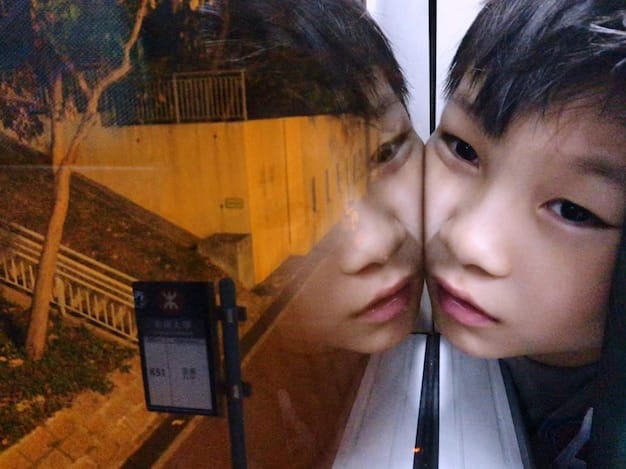Korean Drama Product Placement: Impact, Trends, and Viewer Perception

Korean drama product placement strategically integrates brands into storylines, influencing viewer perception and driving revenue for production companies through subtle and overt advertising tactics.
Korean dramas have taken the world by storm, captivating audiences with their compelling narratives, stunning visuals, and charismatic actors. However, beyond the captivating storylines, a subtle yet significant force is at play: Korean drama product placement. This strategic integration of brands and products within the narrative has become a crucial aspect of the industry.
Understanding Product Placement in Korean Dramas
Product placement, at its core, is a marketing technique where brands pay to have their products featured in entertainment content. In the context of Korean dramas, this can range from a character conspicuously using a specific smartphone to an entire storyline revolving around a particular brand of coffee. The goal is simple: to increase brand awareness and influence consumer behavior through subtle, and sometimes not-so-subtle, exposure.
This advertising approach is not a new phenomenon in media. However, its implementation in K-dramas has distinct characteristics, driven by the unique cultural context and the industry’s production dynamics.
Evolution of Product Placement
The concept of product placement has evolved significantly over the years. What started as brief, incidental appearances has grown into sophisticated, integrated advertising strategies. Early examples in film and television were often simple product shots, but modern product placement seeks to blend seamlessly with the storyline, becoming an integral part of the narrative.
Why K-Dramas Embrace Product Placement
Several factors contribute to the wide acceptance of product placement in K-dramas. The fiercely competitive nature of the Korean entertainment industry, combined with high production costs, makes product placement an attractive revenue stream. Furthermore, the global popularity of these dramas presents brands with unparalleled international exposure, making K-dramas an ideal platform for reaching a vast and diverse audience.
- Financial Incentives: Dramas are often expensive to produce, and product placement offers crucial funding.
- Global Reach: The Hallyu wave ensures brands reach international consumers.
- Cultural Acceptance: Korean audiences are generally accepting of product placement, provided it’s well integrated.
Product placement is not just a financial necessity for K-drama production companies; it also influences the aesthetics and narratives of the shows. Brands often dictate certain aspects of the storyline or character portrayals to ensure their products are showcased in the best possible light. This can lead to debates about creative integrity and the extent to which advertising should influence artistic expression.

Ultimately, understanding the motivations behind product placement in Korean dramas requires insight into the complex relationship between entertainment, advertising, and cultural values. It’s a multifaceted phenomenon that continues to shape the landscape of K-dramas and their global appeal.
Types of Product Placement in K-Dramas
Product placement in Korean dramas manifests in various forms, each designed to achieve different marketing objectives. From subtle background appearances to overt integration within the storyline, the approaches vary widely according to the brand, the production, and the target audience. Understanding these different types of product placement is key to recognizing their impact on viewers.
One common form is visual placement, where products are simply visible within the scene. This could involve a brand of coffee sitting on a table or a specific car parked in the background. While less intrusive, visual placement relies on repeated exposure to build brand recognition. Other types are more direct.
Overt vs. Covert Placement
Overt product placement is direct and obvious. Characters might explicitly mention a brand name, highlighting the product’s features and benefits. This approach ensures high visibility but can sometimes feel forced or disrupt the narrative’s flow. Covert placement, on the other hand, is more subtle. The product appears naturally within the scene, without explicit mention or endorsement.
Strategic Integration
Strategic integration goes beyond mere appearance. The product plays a key role in the storyline, influencing the plot or character development. For example, a character’s job might involve using a specific software, or a crucial scene might revolve around a particular brand of technology. This kind of integration can be highly effective, as viewers associate the brand with the drama’s emotional impact.
- Visual Placement: Products appear in the background, enhancing brand recognition.
- Verbal Placement: Characters mention and endorse specific brands.
- Usage Placement: Characters directly use the product, showcasing its features.
Effective product placement hinges on seamless integration, ensuring that brands enhance, rather than detract from, the viewing experience. The key is finding the right balance between advertising and entertainment. When done well, product placement can feel natural and unobtrusive, leaving a positive impression on viewers without compromising the drama’s artistic integrity.
The effectiveness of different types of product placement also depends on cultural context and viewer expectations. Some audiences may be more receptive to overt advertising, while others prefer subtler integration. Understanding these nuances is essential for brands looking to leverage K-dramas as a marketing platform.
Examples of Successful (and Not-So-Successful) Integrations
Examining specific cases of product placement in Korean dramas reveals the spectrum of success and failure in integrating brands into narratives. These examples showcase the creative strategies employed and highlight the potential pitfalls of overbearing or poorly executed advertising. By analyzing these instances, we can gain insights into best practices and common mistakes.
One notable success story involves the coffee brand Maxim in dramas like “Crash Landing on You.” The product was seamlessly integrated into scenes, with characters often seen enjoying a cup of Maxim coffee during pivotal moments. This not only increased brand visibility but also associated the coffee with the drama’s emotional depth, enhancing its appeal to viewers.
Success Stories
Several K-dramas have mastered the art of subtle product placement, blending brands into the storyline so effectively that viewers barely notice the advertising. These are prime examples of how product placement can enhance, rather than detract from, the viewing experience.
Failures and Controversies
On the other hand, some product placements have been criticized for being too overt or disruptive. In certain instances, characters have engaged in lengthy, unnatural dialogues about a product’s features, jarringly interrupting the flow of the scene. This kind of heavy-handed approach can alienate viewers and damage a brand’s reputation.
- Maxim Coffee in “Crash Landing on You”: Subtly integrated into emotional scenes.
- Hyundai Cars in “Goblin”: Showcased lifestyle and innovation.
- Subway in “Descendants of the Sun”: Integrated into everyday settings.
Brands should take cultural sensitivities into account and avoid perpetuating stereotypes or promoting harmful products. By aligning with the drama’s values and respecting the audience’s intelligence, brands can build positive associations and foster long-term loyalty. Effective product placement requires a balanced approach, where advertising serves as a natural extension of the storytelling.

The success or failure of product placement in K-dramas often boils down to execution. Subtle, natural integration tends to resonate positively, while overt, disruptive placements can backfire. Brands that prioritize creative harmony and cultural sensitivity are more likely to achieve their marketing goals without alienating viewers.
Impact on Viewer Perception and Consumer Behavior
The presence of product placement in Korean dramas has a notable impact on viewer perception and consumer behavior. Research suggests that strategically placed products can influence brand awareness, purchase intent, and overall brand image. Understanding these effects is crucial for brands looking to leverage the K-drama platform for marketing purposes. Whether viewers consciously recognize it, subtle exposure can change their outlook.
One key aspect is the role of parasocial relationships, where viewers develop a sense of connection with the characters they see onscreen. When a beloved character uses a specific product, viewers may be more inclined to associate positive qualities with that brand. This can lead to increased interest and a greater likelihood of purchase. Parasocial interaction affects viewers even after storylines are over.
Building Brand Awareness
Product placement is an effective tool for building brand awareness, especially among younger audiences. By repeatedly showcasing a product within the context of a popular drama, brands can increase their visibility and create a lasting impression.
Influencing Purchase Decisions
Beyond mere awareness, product placement can also influence purchase decisions. Viewers who see their favorite characters using a particular product may be more likely to consider buying it themselves. This is particularly true for products that are perceived as enhancing the characters’ lifestyle or image.
- Increased Brand Awareness: More viewers recognize the brand.
- Positive Brand Association: Linking brand to likable characters.
- Purchase Intent: Viewers are more likely to consider buying the product.
The long-term impact of product placement on consumer behavior depends on several factors, including the drama’s popularity, the product’s relevance to the plot, and the consistency of the brand’s message. When product placement feels natural and aligned with the drama’s values, it can create a lasting positive impression. When it feels forced or irrelevant, it can backfire and alienate viewers.
Understanding the psychological mechanisms behind viewer perception is essential for brands looking to maximize the effectiveness of product placement in K-dramas. By carefully considering how their products are presented and aligning their message with the drama’s narrative, brands can tap into the power of parasocial relationships and influence consumer behavior in a positive way.
Ethical and Legal Considerations
Product placement in Korean dramas raises a number of ethical and legal considerations that industry professionals must navigate. Transparency, disclosure, and respect for viewer autonomy are paramount. Balancing commercial interests with the integrity of artistic expression is a persistent challenge that needs to be consistently addressed. This includes adhering to advertising guidelines.
In many jurisdictions, there are regulations requiring disclosure of product placement. This ensures that viewers are aware that they are being exposed to advertising. Failure to disclose product placement can lead to legal penalties and reputational damage. These requirements apply regardless of the nature of the placement. Transparency is key.
Transparency and Disclosure
Ethical product placement requires transparency. Viewers should be informed when they are being exposed to advertising, allowing them to make informed decisions about their consumption habits. Disclosure can take various forms, such as on-screen disclaimers or announcements at the beginning or end of the program. Lack of transparency erodes trust.
Avoiding Misleading Advertising
Product placement should not be used to deceive or mislead viewers. Claims about a product’s features or benefits must be accurate and substantiated. Brands should avoid making false or exaggerated claims that could harm consumers. Deception is not a viable long-term strategy.
- Transparency: Disclose product placement to viewers.
- Accuracy: Ensure product claims are truthful.
- Respect: Avoid exploiting vulnerable audiences.
Maintaining ethical standards in product placement is not only a legal requirement but also a matter of social responsibility. Brands that prioritize transparency, accuracy, and respect for viewers are more likely to build long-term loyalty and positive brand associations. Ultimately, ethical product placement enhances the viewing experience, while unethical practices can damage both the brand and the integrity of the drama.
The legal landscape surrounding product placement is constantly evolving, reflecting changes in technology, consumer behavior, and regulatory priorities. Staying informed about the latest laws and guidelines is essential for industry professionals looking to navigate this complex terrain.
The Future of Product Placement in K-Dramas
The future of product placement in Korean dramas is poised for significant evolution, driven by technological advancements, changing viewer expectations, and the increasing globalization of the entertainment industry. As audiences become more discerning and advertising techniques become more sophisticated, brands and production companies will need to adapt to stay ahead of the curve. This will require a nuanced understanding of viewer psychology.
One potential trend is the rise of virtual product placement, where brands are digitally inserted into scenes after the production is complete. This offers greater flexibility and allows for targeted advertising based on viewer demographics. However, it also raises ethical questions about transparency and authenticity. Viewers must trust that the content they see is genuine and not manipulated for marketing purposes. New technologies could open new doors for this business model.
Technological Innovations
Advancements in technology, such as augmented reality and artificial intelligence, will likely play a major role in shaping the future of product placement. These technologies could enable more personalized and interactive advertising experiences, enhancing viewer engagement and brand recall. AI can track audience preferences with greater accuracy.
Globalization and Cultural Adaptation
As K-dramas continue to expand their global reach, brands will need to adapt their product placement strategies to resonate with diverse cultural contexts. This may involve tailoring messaging, imagery, and product selection to suit local tastes and preferences. One size fits all marketing does not work. Localization is key.
- Virtual Product Placement: Inserting brands post-production.
- Interactive Advertising: Engaging viewers directly with products.
- Cultural Sensitivity: Adapting to diverse audience preferences.
Looking ahead, the key to successful product placement in K-dramas will be striking a balance between advertising goals and viewer expectations. Brands that prioritize creative integration, transparency, and cultural sensitivity are more likely to thrive in this dynamic landscape. By embracing technology and adapting to changing trends, the industry can ensure that product placement remains a valuable and ethical component of the K-drama experience, improving consumer outreach.
Ultimately, the future of product placement in K-dramas hinges on innovation and ethical responsibility. As the industry evolves, brands and production companies must collaborate to create advertising experiences that are both effective and respectful of the audience’s intelligence and cultural values.
| Key Point | Brief Description |
|---|---|
| 🎬 Strategic Integration | Brands are woven into the plot, influencing characters and storylines naturally. |
| 📺 Ethical Considerations | Transparency is key; viewers must be aware for ethical consumption. |
| 🌐 Global Reach | K-dramas provide brands access to a vast international audience. |
| 🚀 Future Trends | Expect virtual placements that are more tech-driven and personalized. |
▼
Product placement involves subtly integrating brands within K-dramas to increase product visibility and appeal to viewers. It ranges from displaying items in scenes to scripting brand mentions.
▼
High production costs drive this necessity. Also, the enormous fanbase of Korean dramas provides unparalleled international exposure. Thus, they are seen as great advertising opportunities.
▼
Yes, excessive or poorly integrated product placement can detract from the viewing experience. This leads to viewers feeling manipulated. Cultural sensitivity is sometimes ignored.
▼
When transparency is lacking, and regulations aren’t followed, it crosses over into illegality. This is especially so if guidelines on disclosure are ignored or false claims are advertised.
▼
Quite effective, particularly among younger demographic viewers. By seeing favorite characters use particular products, it elevates brand perception and purchase likelihood.
The Future of Product Placement in K-Dramas
In conclusion, **Korean drama product placement** is a multifaceted strategy that requires balance to achieve its marketing goals while respecting audience experience. By embracing innovation and ethical standards, it will continue to evolve as a dynamic element within the K-drama landscape.


![Unveiling the Layers of [Drama Name]: A Comprehensive Review Unveiling the Layers of [Drama Name]: A Comprehensive Review - Cover Image](https://oramacast.com/wp-content/uploads/2025/07/oramacast.com_5_1752083833_cffa9fe7_cover-360x180.jpg)


